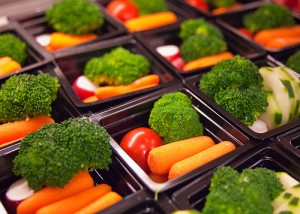How to Make School Lunches Healthier
An article in Choices by David R. Just and Brian Wansink illustrates how school administrators can use behavioral economics to nudge kids toward good eating choices and away from the obesity-causing junk food. Just and Wansink point out that administrators often face a difficult choice between nutritious meals and the bottom line:
It may be possible to replace the standard cheese pizza on white flour crust with pizza smothered in spinach, artichoke hearts, and other vegetables on a whole wheat flaxseed crust. But the healthier pizza is more expensive, and fewer children may want to eat it. Hence many school districts walk a tightrope. School districts must increase the health content of their sales while trying to avoid any reduction in their financial viability. Eliminating the less nutritional items often means eliminating the meal budget’s highest margin items. Further, child patronage of the school lunch program is understandably dependent upon schools offering foods that students are familiar with and that they like, and that will satisfy their appetites.
Even something as simple as rearranging the food can result in healthier choices:
In one Minnesota school, we found that cash registers were one of the bottlenecks in the system. While students waited to pay, they were faced with a wide array of grain-based snacks, chips, granola bars, and desserts. This appeared to generate a number of impulse purchases. While one option would have been to move these temptations, this option would have almost assuredly decreased revenue. A better option was to replace these snacks with an array of fruits. This way, when students were waiting to check out, the impulse temptations were healthier options. Fruit sales increased, snack food sales decreased, and total revenue did not significantly decrease. Part of the increase in fruit sales may have also been aided by the inclusion of a wider variety of fruits, plums and peaches, in addition to the standard trio of apples, bananas, and oranges.
(HT: The Monkey Cage)


Comments